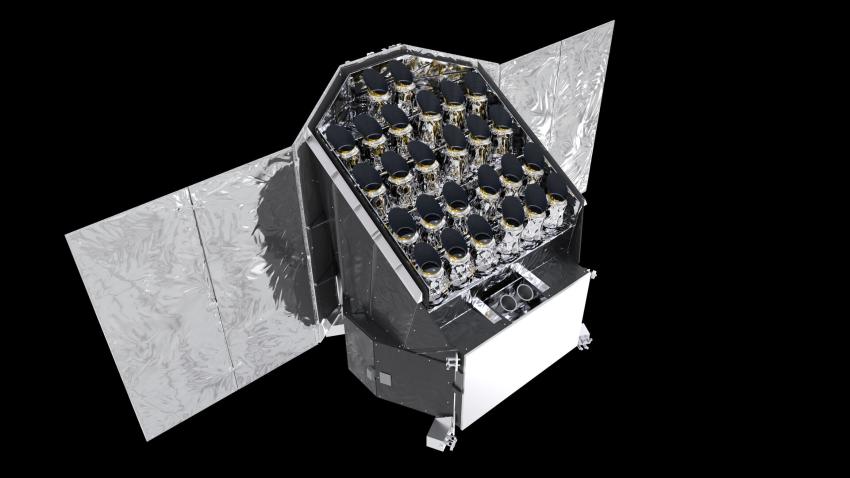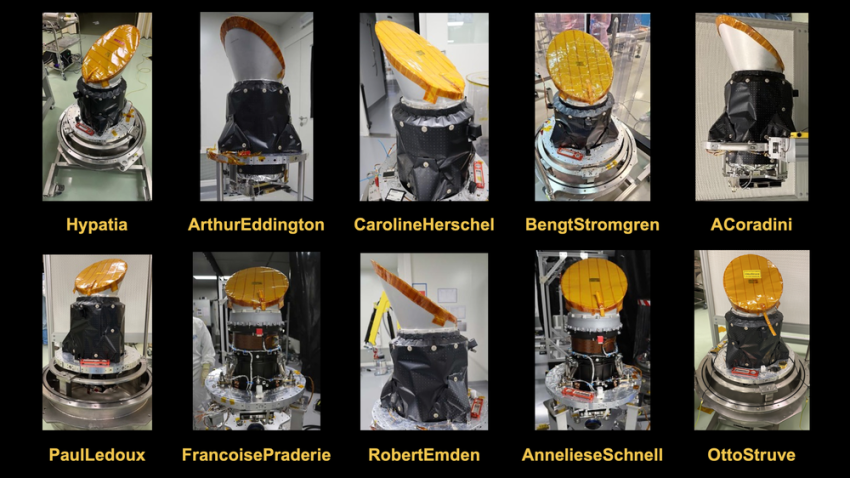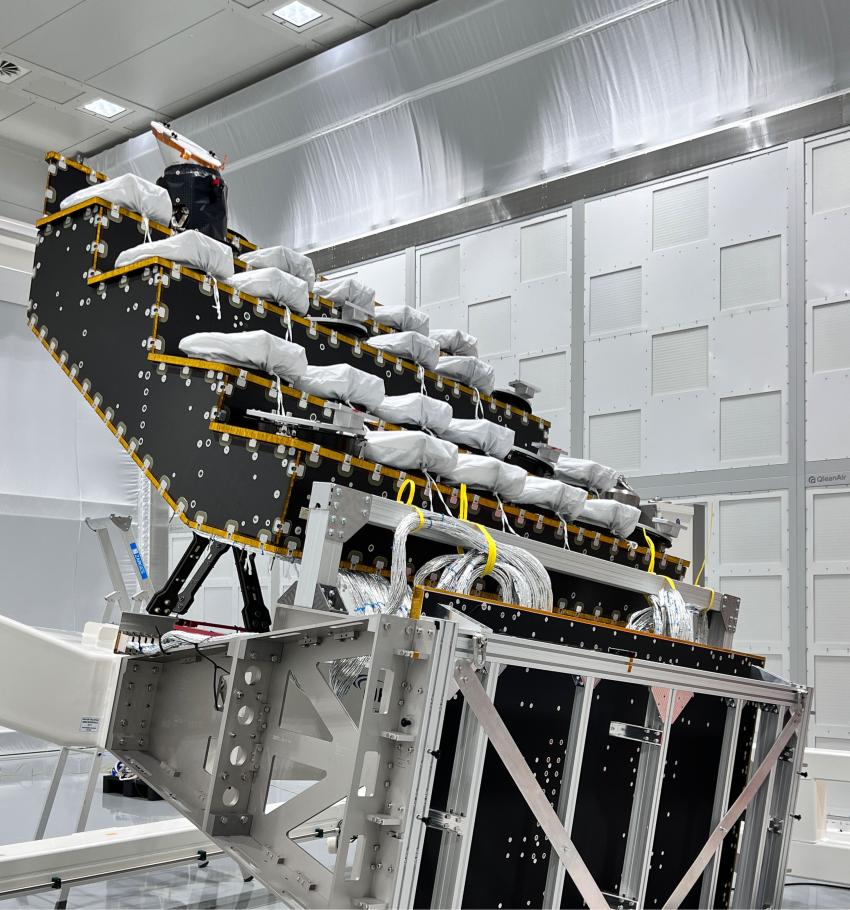Europe's next big space mission - a telescope that will hunt for Earth-like rocky planets outside of our solar system - is on course to launch at the end of 2026.
PLATO, or PLAnetary Transits and Oscillations of stars, is being built to find nearby potentially habitable worlds around Sun-like stars that we can examine in detail.
The space telescope will blast into orbit on Europe's new rocket, Ariane-6, which made its maiden flight last week after being developed at a cost of €4billion (£3.4billion).
Dr David Brown, of the University of Warwick, is giving an update on the mission at the Royal Astronomical Society's National Astronomy Meeting at the University of Hull this week.
"PLATO's goal is to search for exoplanets around stars similar to the Sun and at orbital periods long enough for them to be in the habitable zone," he said.
"One of the main mission objectives is to find another Earth-Sun equivalent pair, but it is also designed to carefully and precisely characterise the exoplanets that it finds (i.e. work out their masses, radii, and bulk density)."
PLATO isn't just an exoplanet hunter, however. It is also a stellar science mission.
As well as searching for exoplanets it will study the stars using a range of techniques including asteroseismology (measuring the vibrations and oscillations of stars) to work out their masses, radii, and ages.
Unlike most space telescopes, PLATO has multiple cameras – including a UK-named one called ArthurEddington, after the famous astronomer and physicist who won the Royal Astronomical Society's prestigious Gold Medal in 1924.
It has 24 'Normal' cameras (N-CAMs) and 2 'Fast' cameras (F-CAMs). The N-CAMs are arranged into four groups of six cameras, with the cameras in each group pointing in the same direction but the groups slightly offset.
This gives PLATO a very large field of view, improved scientific performance, redundancy against failures, and a built-in way to identify 'false positive' signals that might mimic an exoplanet transit, Dr Brown explained.
"The planned observing strategy is to stare at two patches of sky, one in the North and one in the South, for two years each," he added.
"The Southern patch of sky has been chosen, while the Northern patch won't be confirmed for another few years."
Several of the spacecraft's components have finished their manufacturing programmes and are close to completing their calibration tests. This includes the UK-provided Front-End Electronics (FEE) for the N-CAMs.
Built by the Mullard Space Science Laboratory of University College London, these operate the cameras, digitise the images, and transfer them to the onboard data processing.
Ten of the final cameras have been built and tested and the first of these was mounted onto the optical bench - the surface which keeps all cameras pointed in the right direction - earlier this year.
The mission is on track to launch in December 2026.
Media contacts
Sam Tonkin
Royal Astronomical Society
Mob +44 (0)7802 877 700
Dr Robert Massey
Royal Astronomical Society
Mob: +44 (0)7802 877 699
Megan Eaves
Royal Astronomical Society
Science contacts
Dr David Brown
University of Warwick
Images and captions
Caption: An artist's impression of the European Space Agency's PLATO spacecraft.
Credit: ESA/ATG medialab
Caption: An animation of PLATO, showing different elements of the telescope including its payload of 26 cameras, the sunshield and solar panels.
Credit: ESA/ATG medialab
Caption: Unlike most space telescopes, PLATO has multiple cameras – including a UK-named one called ArthurEddington, after the famous astronomer and physicist who won the Royal Astronomical Society's Gold Medal in 1924.
Credit: OHB
Caption: Ten of the final cameras have been built and tested and the first of these was mounted onto the optical bench - the surface which keeps all cameras pointed in the right direction - earlier this year.
Credit: OHB System AG
Notes for editors
The NAM 2024 conference is principally sponsored by the Royal Astronomical Society, the Science and Technology Facilities Council and the University of Hull.
About the Royal Astronomical Society
The Royal Astronomical Society (RAS), founded in 1820, encourages and promotes the study of astronomy, solar-system science, geophysics and closely related branches of science.
The RAS organises scientific meetings, publishes international research and review journals, recognises outstanding achievements by the award of medals and prizes, maintains an extensive library, supports education through grants and outreach activities and represents UK astronomy nationally and internationally. Its more than 4,000 members (Fellows), a third based overseas, include scientific researchers in universities, observatories and laboratories as well as historians of astronomy and others.
The RAS accepts papers for its journals based on the principle of peer review, in which fellow experts on the editorial boards accept the paper as worth considering. The Society issues press releases based on a similar principle, but the organisations and scientists concerned have overall responsibility for their content.
Keep up with the RAS on X, Facebook, LinkedIn and YouTube.
About the Science and Technology Facilities Council
The Science and Technology Facilities Council (STFC) is part of UK Research and Innovation – the UK body which works in partnership with universities, research organisations, businesses, charities, and government to create the best possible environment for research and innovation to flourish.
STFC funds and supports research in particle and nuclear physics, astronomy, gravitational research and astrophysics, and space science and also operates a network of five national laboratories, including the Rutherford Appleton Laboratory and the Daresbury Laboratory, as well as supporting UK research at a number of international research facilities including CERN, FERMILAB, the ESO telescopes in Chile and many more.
STFC's Astronomy and Space Science programme provides support for a wide range of facilities, research groups and individuals in order to investigate some of the highest priority questions in astrophysics, cosmology and solar system science.
STFC's astronomy and space science programme is delivered through grant funding for research activities, and also through support of technical activities at STFC's UK Astronomy Technology Centre and RAL Space at the Rutherford Appleton Laboratory. STFC also supports UK astronomy through the international European Southern Observatory and the Square Kilometre Array Organisation.
Visit https://stfc.ukri.org/ for more information. Follow STFC on Twitter: @STFC_Matters
About the University of Hull’s E.A. Milne Centre
The E.A. Milne Centre for Astrophysics at the University of Hull brings together experts who study the evolution of structure in the Universe ranging from stars through to galaxies and galaxy clusters, right up to the largest structures in the cosmos.
The centre employs observations, theory and computational methods in collaboration with international partners. Postgraduate and undergraduate students work alongside staff to understand the wonders of the Universe. Through a series of outreach activities, the centre also aims to share its passion for astronomy and astrophysics with the region and beyond.




